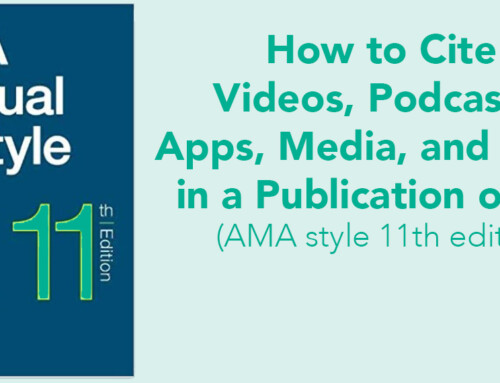 Educators are eager to gather valuable learning tools such as EKGs and x-rays to be used in teaching for our learners, whether from our home institutions or internationally through the internet. However, this may not always be seen as altruistic; history and even modern day medicine is full of examples of misguided attempts to further medicine at the expense of patients such as the Tuskegee Syphilis Experiment from 1932-1972.
Educators are eager to gather valuable learning tools such as EKGs and x-rays to be used in teaching for our learners, whether from our home institutions or internationally through the internet. However, this may not always be seen as altruistic; history and even modern day medicine is full of examples of misguided attempts to further medicine at the expense of patients such as the Tuskegee Syphilis Experiment from 1932-1972.
The focus of this post is how to go about collecting patient data for teaching purposes and avoiding confidentiality and consent violations while always remaining respectful of the patient and their rights.
To learn more from those engaged in obtaining patient data for teaching purposes, I interviewed Dr. Ameer Hassoun, Pediatric EM faculty from SUNY Downstate, who has published case reports and clinical images to learn his tips for collecting patient data.
What are the general rules that you follow when obtaining data and images of patients?
Patient information is sacred ground. Always consent for the use you have in mind. Families are usually very helpful when you disclose your plan for the image. Be sensitive to the situations around the case. Use a good camera for detailed images. Protect what you obtain with multiple layers of passwords.
What are some of the professionalism pitfalls that can get one in trouble?
The importance of education and the opportunity of exposing many healthcare workers to the experience or the case can lead to some pitfalls:
- Delay in providing care
- Increased anxiety of the patient or parent
- Improper circumstances to obtain the image (severity of the disease)
- Unsafe storage of the images (use of cell phones or personal computers)
I use a password protected computer, with a password protected folder to keep those images. This folder is not accessible from my computer as it is located in an external hard drive (that is also password protected). All of these steps are taken to ensure the safety of these images
Do you get consent from every patient that you obtain images from such as EKG, xrays, and photos?
Consent is a very important aspect before obtaining images as it protects patient rights and provides the limits of disclosure. I usually obtain consents (mostly written with a copy attached to the chart and another kept with me) on every patient that I photograph, except if the photographs are needed for legal documentation (i.e. physical abuse).
The KEY point is to identify what is the use of that image. As for EKGs and x-rays I tend to de-identify the image as much as I can before using it in teaching. If the image is used for a case report then a full consent should be obtained since you would describe some demographic data in your article.
Does it matter what you do with the data you obtain? For example, is there a difference to use clinical images to publish a case report vs to assist in a large scale research project?
If you are using the image for a case report/series, no further permissions are needed after obtaining the consent. If you are enrolling for a larger study, IRB approval is required prior to obtaining such information. The latter usually involves multiple steps to ensure de-identification prior to its use in the project. That is why it is important to decide what to do with the image prior to obtaining it.
Are some types of patient related data more important to protect than others? For example, lab data vs a photo of a body part?
You should never disclose patient’s name, date of birth, address, insurance information, medical record number. Any image disclosing the patient’s face, a rare finding that is enough to identify the patient by population, needs a well written informed consent with disclosures of the intents of use. Lab data carry with it a lower level of identification. But I tend to go on the safe side and obtain consent on any protected health information use (which includes the lab information).
Are there any gray areas that you have been involved with regarding obtaining clinical images and HIPAA violations?
I had one experience where I took the consent for a pediatric patient over the phone with a witness listening to the conversation. After the arrival of the parent I asked them to sign the form and confirm our discussion. This area can be a grey area as we cannot assure 100% that the person on the phone is the parent. Since then I have been advising against such practice.
Are there any lines that you would never cross or violate to protect the patient’s privacy?
Treat patient rights with respect. We should not expose their vulnerability without their approval. Follow your institution’s regulations. Avoid giving information that may lead to identifying the patient. Always remember that you can be that patient – how much are you willing to disclose?
Background information
ACEP Policy on Recording Devices in the Emergency Department (2011):
ACEP believes that the use of recording devices, including cell phone cameras, in the emergency department for the purpose of capturing photographic, video, or audio media poses significant risks to the privacy and confidentiality of patients and staff. ACEP encourages emergency departments to adopt policies regulating the use of such devices.
ACEP Policy Statement on Filming in the Emergency Department (2009):
ACEP opposed the filming for public viewing of emergency department patients or staff members except when they can give fully informed consent prior to their participation.





